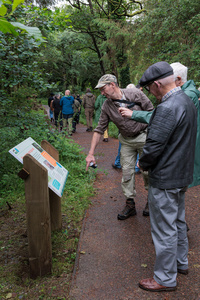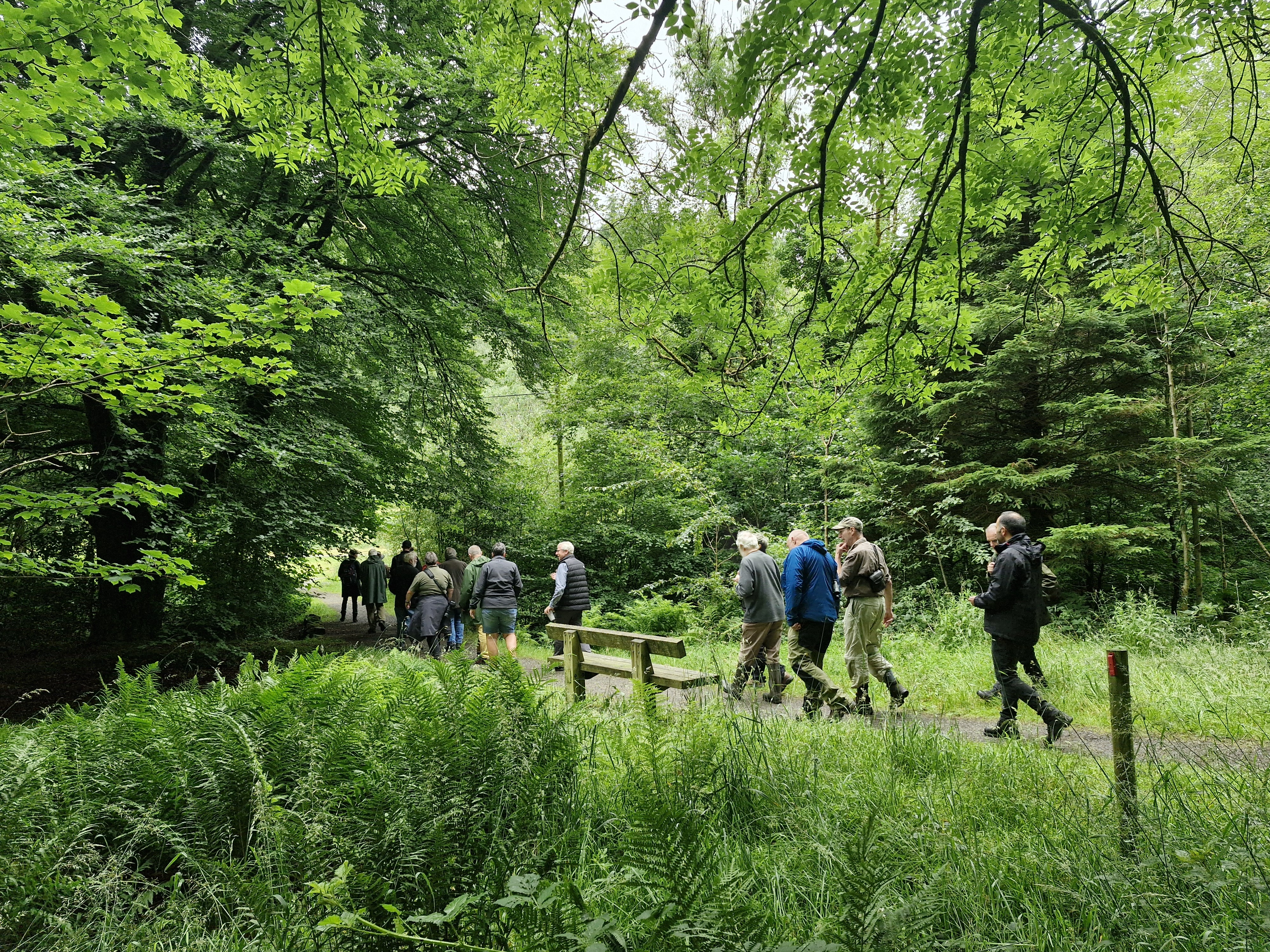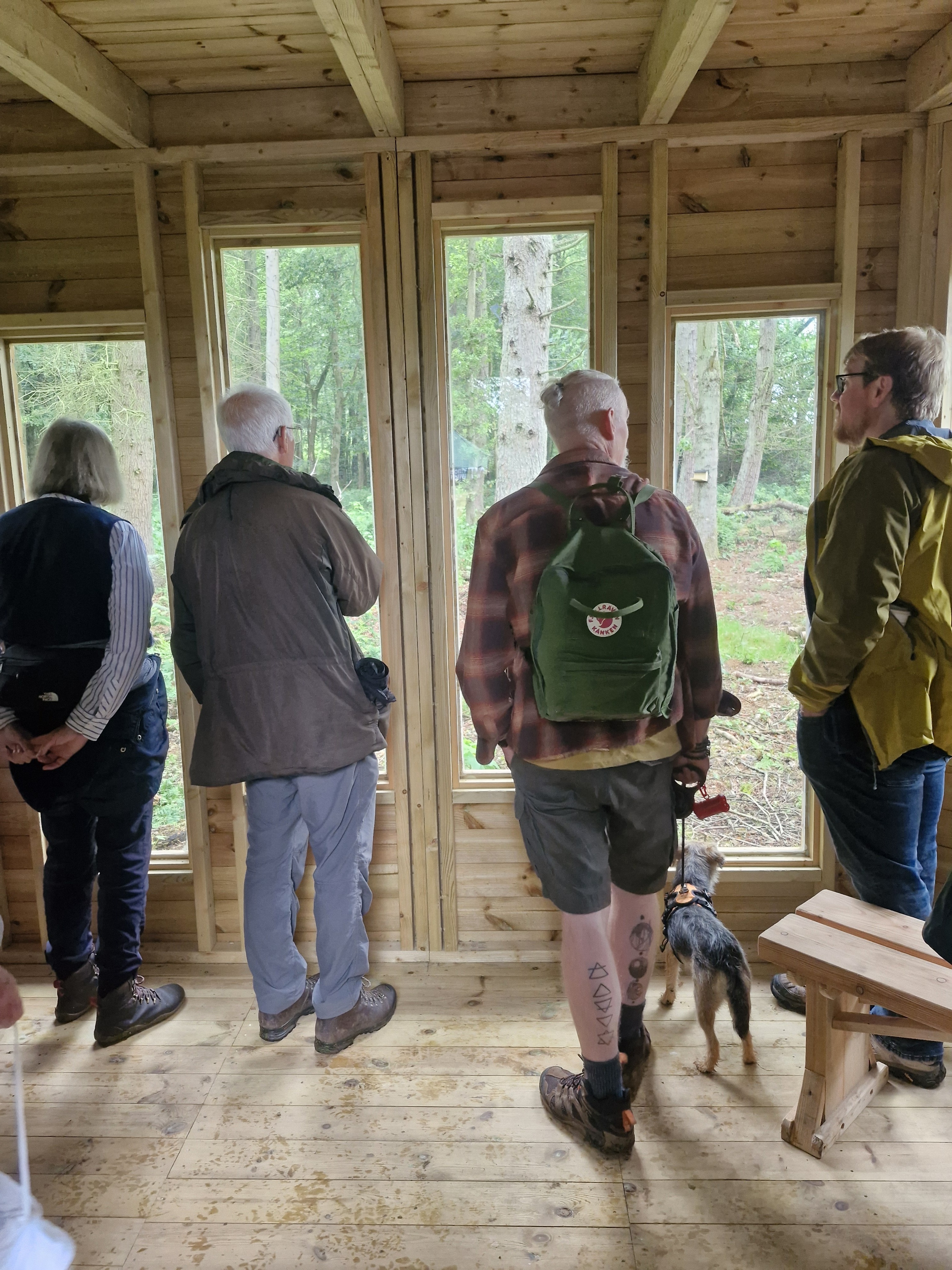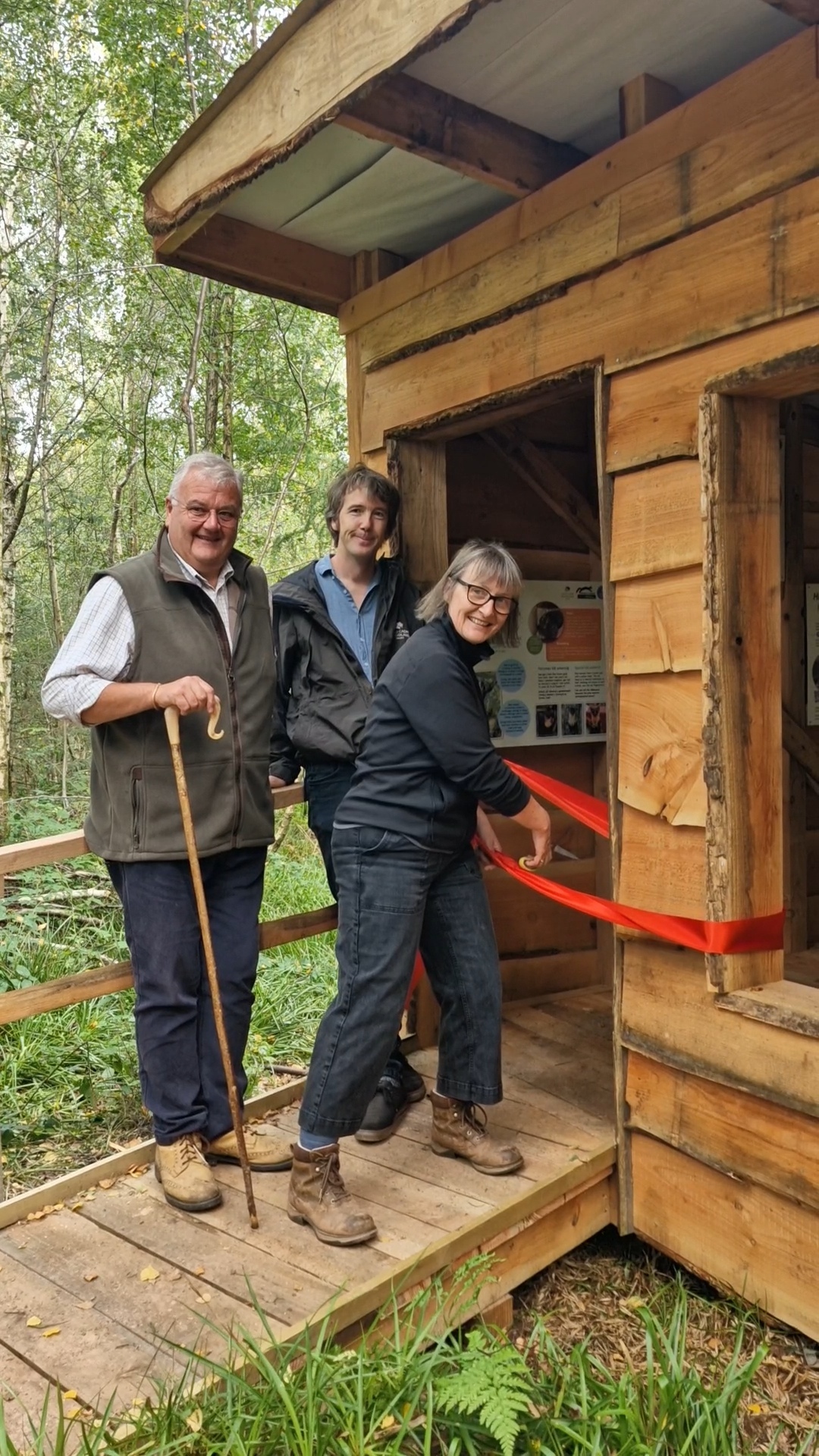The Pine Marten Havens and beyond
Martens on the Move Project Manager, Dr Stephanie Johnstone reflects on the recent launch of three Pine Marten Havens in collaboration with our project partners.

Since the beginning of the Martens on the Move project, we have been working with our partners to create three ‘Pine Marten Haven’ sites – one in each of Wales, Scotland and England. When I first joined the VWT team in 2022 as Project Manager for the development phase of Martens on the Move, I discovered that VWT's aim for the three Pine Marten Havens was to improve habitats for pine martens, stimulate public engagement with the species, and inspire good practices for land managers. This was very worthwhile and ambitious, and I’m pleased to say that by working with our fantastic partners, I believe that together we are achieving this goal.
I am often asked, ‘what is a Pine Marten Haven?’ and the short answer is that it is where land is being managed to actively help pine martens to thrive. Each of our project partners — Forestry and Land Scotland, National Trust, Coed Cadw - Woodland Trust in Wales and Natural Resources Wales — are delivering multiple outcomes for people and nature on their land, and each aims to support a healthy population of pine martens.

The first guided walk during the launch of the Pine Marten Haven at Kirroughtree.
Pine martens are a forest-dependent species and don’t like to venture far from the safety of the trees. Each pine marten has a large home range of between 1km2 and 30km2 depending on habitat quality — which means that a well-established and thriving population requires a lot of forest and a lot of space! Therefore, pine marten conservation must happen at the landscape scale. Each of our three Havens provides the opportunity to demonstrate habitat management for the species across thousands of hectares — while also meeting other land management objectives. Since there are very few large landholdings managed exclusively for wildlife in Britain — as with the National Parks in the USA and Australia — it is important to understand how we can best support a recovering predator that requires vast tracts of land in a landscape that must deliver multiple outcomes for wildlife and people.
Although each Haven site has its own unique land-use context, each one demonstrates alternative approaches to long-term land management that will support pine martens and other native species, while delivering wider economic and social benefits for local communities.
- Kirroughtree, Dumfries and Galloway — in partnership with Forestry and Land Scotland (FLS) — is considered the gateway to Galloway Forest Park, Britain’s largest forest that covers 299 square miles. The majority of the park consists of commercial conifers, where timber is the main source of income with more than 500,000 tonnes being harvested annually. FLS manages the entirety of Galloway Forest Park and, in addition to timber production, they provide many facilities for visitors including extensive walking, cycling and bridle trails, visitor centres and cafes. Since a small reintroduction in the early 1980s, they have also carefully nurtured a population of pine martens. For more than 40 years they have actively supported the establishment and expansion of the species population in Galloway Forest, including installing and managing 140 den boxes where pine martens can safely overwinter and raise their young. The Galloway Forest pine marten population is now well established with breeding recorded every year and has expanded into the surrounding areas in both Dumfries and Galloway and Ayrshire.
- Wentwood Forest, Monmouthshire — in partnership with Coed Cadw and Natural Resources Wales (NRW) — forms part of the largest ancient woodland in Wales and is a remnant of the continuous forest that once stretched from the River Usk to the Wye. Today, Wentwood forest covers approximately 1,000 hectares and is managed collaboratively by Coed Cadw and NRW. Its broadleaf trees have been harvested for timber for several centuries, especially during the two world wars, and was mostly replanted with non-native conifers. This has made Wentwood a Plantation on Ancient Woodland Site (PAWS). Now, both organisations are working to restore the native broadleaf woodland and to increase plant diversity, which in turn will increase the ecological value of the site for all native woodland wildlife. Den boxes have been installed to provide a critical denning resource for pine martens that is currently absent in these young forests. The harvested timber from the non-native conifers continues to provide an income for the organisations as this transformation occurs. Additionally, Wentwood is delivering benefits for the local community and visitors from further afield, with many walks, cycle trails and bridle trails open to the public. This partnership working between Ceod Cadw and NRW is an inspirational example of organisations coming together to collectively manage habitat at the landscape scale.
- Wallington, Northumberland — in partnership with the National Trust — is National Trusts’ largest intact agricultural estate at 5,431 hectares and includes commercial forests, native woodland, as well as fifteen tenant farms. VWT’s Martens on the Move fits within the National Trust’s ‘Wilder Wallington’ project that aims to create ‘a landscape for people and nature’. The Wallington team, along with partners (including VWT), volunteers, tenants and the local community, is working hard to achieve critical nature renewal at the landscape scale by restoring waterways, planting one million trees in new woodlands and wide hedgerows to create wildlife highways, restoring wetlands and peatlands, and establishing species rich grasslands. The team at Wallington is working with tenants and their neighbours to achieve the greatest possible scale of habitat restoration. This site is demonstrating that with vision, wildlife can be supported within a rural landscape, while also delivering economic and social benefits for the whole community.
Habitat improvement is a critical but long-term element of wildlife management. The work we are doing now with our Haven partners will help to ensure that our collective vision for each site will continue to aid the recovery of pine martens and the wider ecosystems that support them for decades to come.
Our Havens are also an important opportunity for us to share the pine marten story with the public, to raise awareness of the species as well as the importance of healthy and diverse woodland ecosystems. Pine martens are a wonderful indicator of woodland health, and if these ecosystems are managed for the benefit of pine martens, it will also support other woodland flora and fauna. New wildlife hides at each site give visitors the opportunity to learn about the secret lives of pine martens while sitting and enjoying nature. We have also installed engaging interpretation boards along nature trails where you can stroll through the woodlands and see for yourselves all the ways that we and our partners are working to improve the local habitat for pine martens. And perhaps one of my favourite things is our life-sized pine marten silhouettes that are hiding in the trees along the nature trails for visitors to find. ‘Wow, I never realised how big they are,’ is the most common comment I have heard so far!

Guests enjoying the view from the new wildlife hide at the Wallington Pine Marten Haven launch.
The Haven launches at each of the sites this summer were such a wonderful opportunity to celebrate all that we have achieved — and will continue to achieve — with the many people and organisations that are working with VWT to make Martens on the Move such a success. We are almost halfway through our four-year project now and launching our three Pine Marten Havens feels like a big milestone! But the fun doesn’t stop there. At each of the sites, we will continue to work with our project partners, local communities and volunteers from local groups to improve the habitat for pine martens and spread the word about landscape-scale nature recovery. We will also be delivering ‘Haven Day Trips’ for families that wouldn’t otherwise have access to nature, sharing with them our passion for pine martens and the wonders that woodlands have to offer.

Vincent Wildlife Trust CEO, Dr Lucy Rogers, Glyn Morgan from The National Lottery Heritage Fund (left) and Rob Davies from Coed Cadw (right) opening the new wildlife hide at the Wentwood Pine Marten Haven launch.
We want to say a huge thank you to our project partners, Coed Cadw, Forestry and Land Scotland, National Trust and Natural Resources Wales, for all their support on this project so far — and we look forward to continuing to work with them over the coming years.
Martens on the Move is made possible with The National Lottery Heritage Fund. Thanks to the National Lottery players, we are able to create opportunities to increase knowledge and understanding of pine martens and to improve habitats for the species across the UK.

